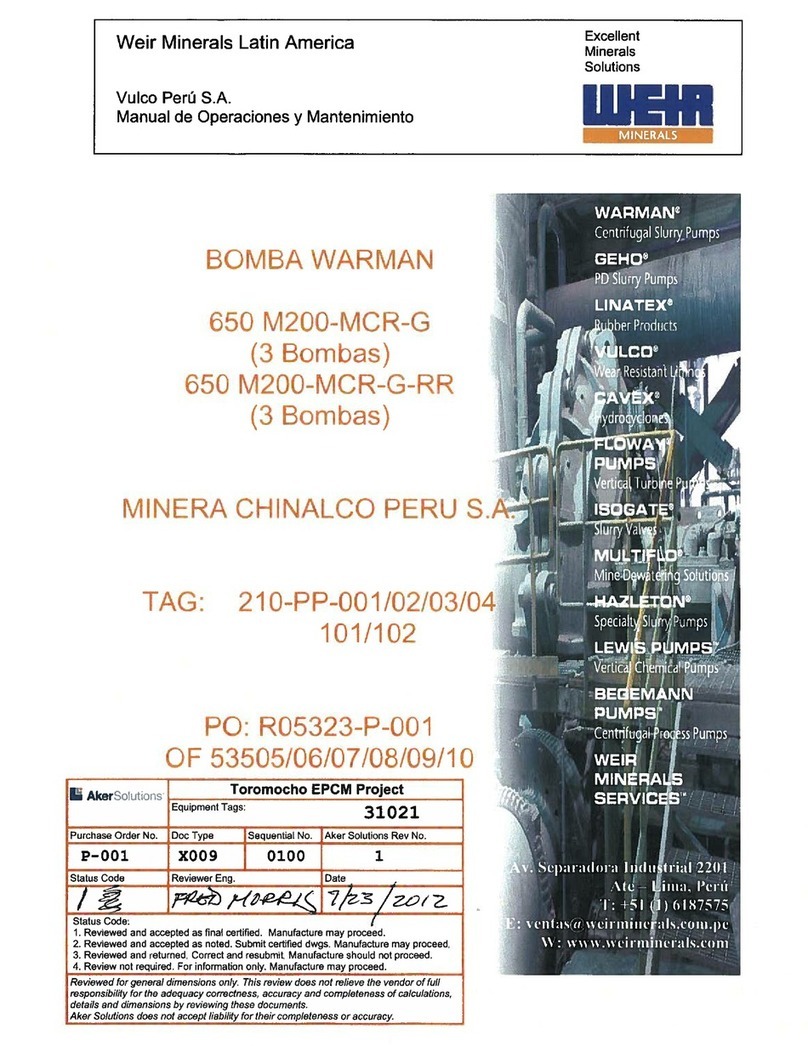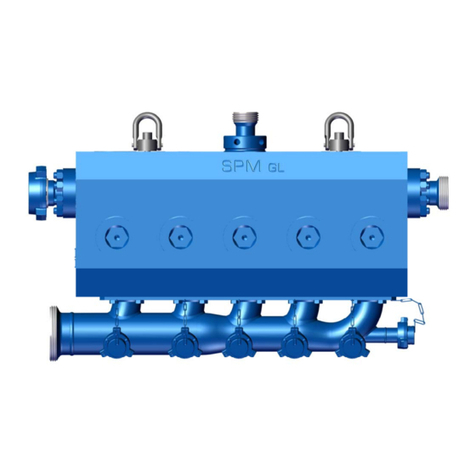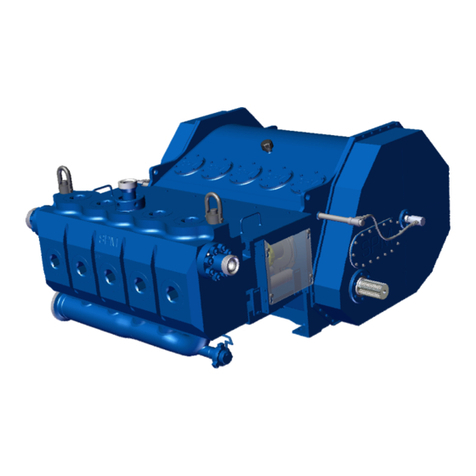
Document P/N: 2P121260
Release Date: 02/27/2017
Revision: E
3 of 41
5. It is a personal responsibility to use the proper tools when servicing the pump. Any special tools
required are furnished with the pump when new, and should be kept with the pump for its routine
maintenance. It is your personal responsibility to be knowledgeable and trained in the use and proper
handling of these tools for all maintenance of the pump. A pump is made up of internal and external
moving parts. All personnel should be located away from the pump while in operation.
On Location:
1. Each pump is clearly marked with a maximum pressure and temperature rating. This pressure must not
be exceeded or SERIOUS INJURY OR DEATH CAN OCCUR.
2. Each pump is clearly marked with a maximum horsepower rating. This horsepower rating should not be
exceeded or mechanical damage can occur, leading to SERIOUS INJURY OR DEATH.
3. The pump's discharge connections should be properly cleaned, and lightly oiled before the downstream
piping is attached. Any worn, damaged or missing seals should be replaced before engaging the
pump's drive.
4. The pump's suction connections should be properly cleaned, and lightly oiled before the supercharge
hoses are attached. Any worn, damaged or missing seals should be replaced prior to pumping.
Leaking connections can cause pump cavitation leading to equipment failure and subsequent INJURY
OR DEATH.
5. Any fluid cylinder which has been pressured beyond its specified working pressure should be returned
to Weir Oil & Gas for disassembly, inspection and recertification.
6. Welding, brazing, or heating any part of the pump, with the exception of driveline companion flanges, is
prohibited. If accessories must be attached, consult Weir Oil & Gas factory prior to installation.
7. The SPM®pump suction supply flow, and pressure minimums in the pump service manual must be
maintained or equipment damage will occur and can lead to SERIOUS INJURY OR DEATH.
8. A complete visual inspection of the pump's power end and fluid end must be made prior to each use.
Any leaking seals, broken bolts, leaking hoses, or improperly tightened parts must be remedied prior to
rotating the pump.
9. Any oil and other contaminants from pump should be contained during operation, and throughout the
maintenance process. Improper containment can lead to serious injury, equipment damage, property
damage, or damage to the environment.
10. If a pump is used in a place where permanent piping is to be attached, frame flexing or structure
movements must be considered. Do not place the discharge or suction connections in a bind. Inspect
all components of such piping structure, including any valves, every 90 days for wash, erosion,
corrosion, etc. Replace if worn. For mobile mounted units; discharge line swivels are required.
11. SPM®well service pumps are to be installed and operated in a horizontal position only, as shown in the
pump's service manual. Operation in an extreme inclined position could cause equipment failure,
leading to injuries due to improper oil flow and/or improperly sealing valves.


































